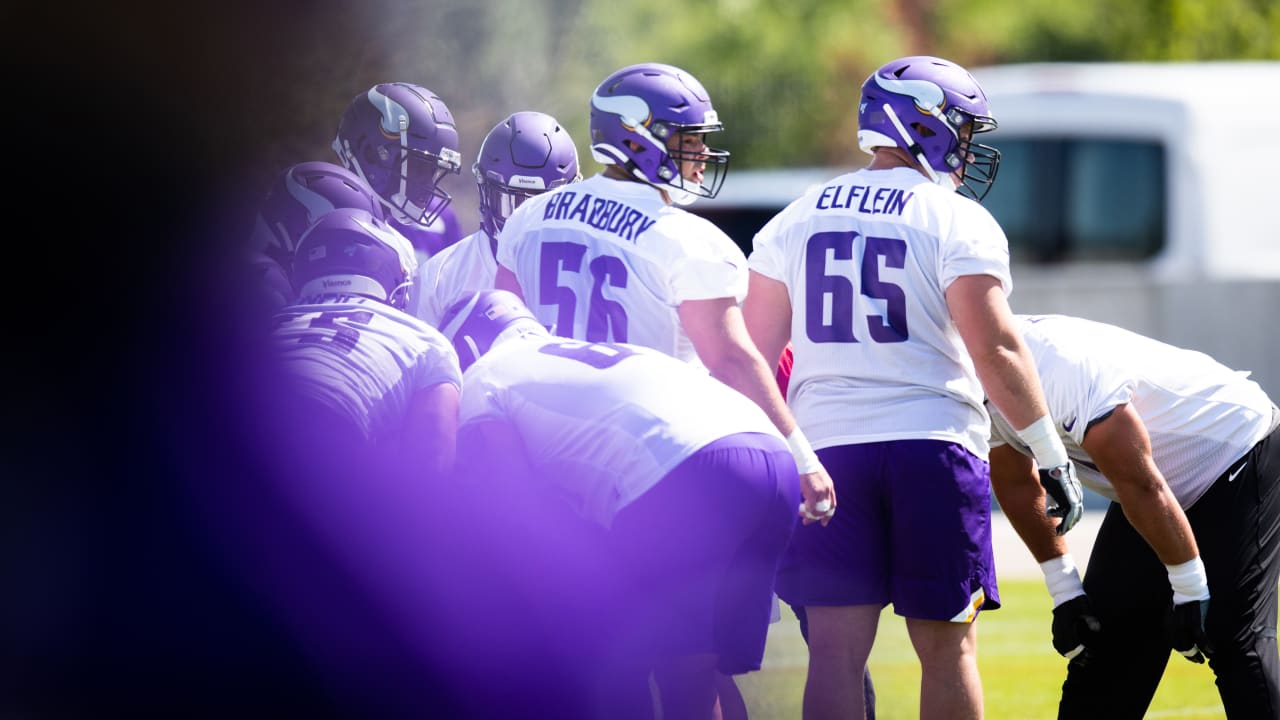Viktor
Well-known member
- Mar 19, 2019
- 2,552
- 0

Vikings Head Coach Mike Zimmer pointed to Kline’s agility after Minnesota inked the guard to a deal in March.
“He’s got very good feet, athletic,” Zimmer said. “I think he’s going to fit in well.”
Kline fits the mold of the vision for the offensive line, a unit that will be able to move well and get to the second level in Minnesota’s zone blocking scheme.
“Our guys have to be athletic,” Zimmer explained. “They have to have really good body control and balance, and then obviously they’ve got to be tough and physical and those things. We’re looking for guys with a certain skill set to do what we want them to do.”
Vikings offensive line coach/run game coordinator Rick Dennison by-and-large shares a philosophy with Zimmer, naming “athletic, smart and tough” as the three traits he looks for in offensive linemen.
Dennison, who has more than two decades of NFL coaching experience, is just one of the new faces added to Minnesota’s offensive coaching staff during the offseason.
He is well-acquainted with Gary Kubiak, hired as the Vikings assistant head coach/offensive advisor, as well as tight ends coach Brian Pariani. Kubiak’s son, Klint Kubiak, will oversee quarterbacks, and Drew Petzing moved from QBs to coach wide receivers.
Kevin Stefanski is entering his 14th season with the Vikings but first full campaign as the team’s offensive coordinator, a role he took over late last season when John DeFilippo was relieved of his duties.
Under a new-look coaching staff, the revamped line should enable the Vikings to run (no pun intended – we’ll come back to that word later) their offensive system effectively. In February, Stefanski explained that his main goal is to be unpredictable offensively.
“We want to be a run team. We want to be a pass team,” Stefanski said. “We want there to be that marriage between the run and the pass game, and that is something that Coach [Kubiak] has hung his hat on over the years.”
In 2017, when the Vikings finished the regular season 13-3 and advanced to the NFC Championship Game, 45.9 percent of their plays were run plays. Their pass-play percentage of 54.1 ranked 28th in the NFL. The 2015 Vikings ran 48.9 percent of the time, less than only the Panthers and Bills.
Minnesota passed the ball on 64.4 percent of plays in 2018, the fourth-highest in the league, running the ball just 35.6 percent of the time. Worth noting is that in the Vikings final three games, during which Stefanaski had the headset, passing plays made up just 52 percent of the calls.
Nine of the 12 teams that made the playoffs last season ran the ball at least 41 percent of the time. Three of the teams that advanced to the conference championship games ran it more than 43 percent.
“I just want to be more balanced,” Zimmer said this spring. “Most of those [playoff] teams, even though they’re passing teams, they still run the football, and it makes it much more difficult for the defense if you can run the ball.
“It slows the defense down, the pass rush, which helps your offensive line,” Zimmer added. “Play-action slows down the defensive line. I think all of those things help you make an effective offense. We need to do a better job there.”
Stefanski also commented on the benefit of mixing in play-action.
